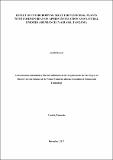Effect of intercropping selected pesticidal plants with common bean on aphids infestation and natural enemies abundance in Arusha, Tanzania
Abstract
A Randomized Complete Block Design experiment was laid out in four replications to
evaluate abundance of natural enemies (NEs) and aphid infestation on common bean
(Phaseolus vulgaris L) when intercropped with pesticidal plants (PPs) namely Tagetes
minuta, Bidens pilosa, Ageratum conyzoides, Ocimum suave and Hyptis suaveolens. The
results showed that PPs attracted NEs and pollinators and reduced aphid infestation with no
or little negative effect on bean actual yield. Increased NEs and pollinators was probably
attributed to plant diversity created by intercropping system, which provide a greater number
of opportunities for NEs and pollinators to survive in agricultural systems. However, the
degree of abundance of NEs and pollinators differed among treatments. H. suaveolens and O.
suave attracted high proportion of pollinators compared with other treatments, while B.
pilosa, T. minuta and A. conyzoides attracted high proportion of NEs compared with H.
suaveolens and O. suave. Likewise, abundance, incidence and severity of aphids was lower in
the intercropped plots implying positive effects of the PPs-bean intercrop in reducing number
of aphids. On repelling effects, all PPs repelled aphids in comparison with the control (unintercropped
common bean). Further work is required to determine the exact cause of the
yield variability in common bean intercropped with H. suaveolens and O. suave compared
with the yield of the same common bean when intercropped with other treatments in the same
study.

